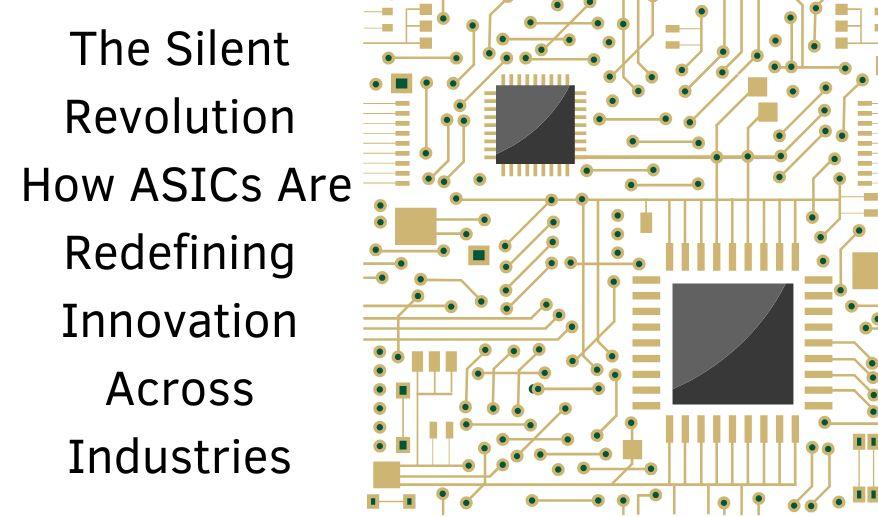In this digital world, ASICs are revolutionizing semiconductor technology with unparalleled efficiency. These specialized chips drive advancements in healthcare, AI, and environmental monitoring. Researcher Anubhav Mangla explores their evolution, applications, and challenges, offering insights into how ASICs are shaping the future of computing and transforming industry-specific solutions.
Precision-Driven Design for Maximum Efficiency
Unlike general-purpose processors, ASICs are tailored to execute specific tasks with extreme precision. Their architecture eliminates unnecessary computational overhead, optimizing both performance and energy consumption. Structured ASIC methodologies have introduced new levels of design efficiency, significantly reducing development time while maintaining high computational accuracy.
Innovative techniques such as pre-characterized tile-based architectures and hierarchical design approaches have streamlined ASIC development. These advancements enable improved predictability in performance while minimizing design iterations, making ASICs the preferred choice for industries requiring high-speed processing and energy efficiency.
ASICs in Healthcare: Redefining Medical Diagnostics
One of the most impactful applications of ASICs is in healthcare. By optimizing data flow and incorporating specialized memory architectures, ASICs are playing a crucial role in pattern recognition and advanced diagnostic procedures. The ability to process large datasets efficiently allows healthcare professionals to make quicker and more precise decisions, improving patient outcomes.
In medical imaging and diagnostics, the integration of neural network accelerators is revolutionizing the processing of complex medical images. These accelerators significantly enhance computational speed while reducing power consumption, enabling real-time medical analysis with high accuracy.
Smarter Agricultural and Environmental Monitoring
The agricultural sector has also seen groundbreaking developments through ASIC integration. Smart environmental monitoring systems leveraging ASICs provide real-time analysis of soil conditions, temperature variations, and crop health. These chips incorporate power-efficient sampling techniques that adapt to environmental changes, ensuring prolonged operational life while maintaining precise measurements.
ASIC-based agricultural sensors have been designed with on-chip calibration and compensation circuits, ensuring reliable performance even in extreme weather conditions. The ability to function efficiently over extended periods makes these sensors indispensable for modern farming techniques that rely on data-driven decision-making.
Powering the Edge: AI and High-Performance Computing
As artificial intelligence and edge computing gain momentum, ASICs are proving instrumental in optimizing real-time data processing. Unlike traditional processors, ASICs designed for AI applications can execute neural network operations with remarkable speed and energy efficiency. These chips are tailored for high-performance tasks while maintaining power constraints, making them ideal for portable and embedded AI systems.
By incorporating dynamic voltage and frequency scaling (DVFS), modern ASICs offer flexible power-performance trade-offs. This ensures that they maintain computational efficiency without excessive energy consumption, a crucial factor for applications such as autonomous systems and IoT devices.
The Challenges of ASIC Development
Despite their advantages, ASIC development comes with its own set of challenges. Increasing design complexity requires extensive verification processes, which consume significant time and resources. With advanced semiconductor nodes pushing the limits of integration, achieving optimal power management and signal integrity has become increasingly intricate.
Adoption of design-for-manufacturing (DFM) techniques is essential for maintaining yield rates in advanced nodes. Additionally, clock distribution optimization remains a major hurdle, as efficient clock synthesis is critical for minimizing power consumption while ensuring reliable performance.
The Future of ASICs: AI-Driven Design and Beyond
The integration of artificial intelligence in ASIC design is set to revolutionize the semiconductor industry. AI-native electronic design automation (EDA) tools are streamlining development by predicting and correcting design flaws in real time. Machine learning algorithms are also being utilized for optimizing verification processes, reducing development cycles significantly.
Emerging architectural innovations, such as compute-in-memory paradigms, promise enhanced computational efficiency, particularly for AI applications. Additionally, advancements in 2.5D and 3D packaging technologies are paving the way for higher integration density, allowing for even more compact and efficient designs.
In conclusion, Anubhav Mangla’s research underscores the transformative impact of ASICs across industries, delivering unmatched efficiency and performance tailored to specific applications. With ongoing advancements in semiconductor manufacturing, AI-driven design methodologies, and energy optimization techniques, these specialized chips are poised to play an even greater role in future innovations. Integrating specialized architectures, AI-driven automation, and power-efficient strategies will ensure that ASICs continue leading technological progress across diverse sectors.





























